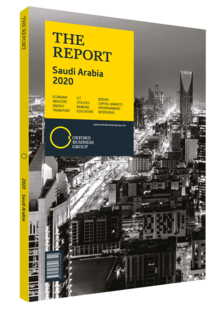Prince Naif bin Sultan bin Mohammed bin Saud Al Kabeer, Chairman, Zain Saudi Arabia: Interview

Interview: Prince Naif bin Sultan bin Mohammed bin Saud Al Kabeer
What is being done to ensure that Saudi Arabia’s ICT sector remains competitive?
PRINCE NAIF BIN SULTAN BIN MOHAMMED BIN SAUD AL KABEER: Saudi Arabia’s ICT sector is the largest in the Middle East, and its contribution to the national economy is projected to reach SR50bn ($13.3bn) by 2025. In 2018 alone the country’s digital operators outperformed the local stock market by $18bn, thanks to a major digital development strategy. This growth would not have been possible without the competitive services offered by telecoms providers, progressive regulation by the Communications and Information Technology Commission (CITC), and the vision of the Ministry of Communications and Information Technology (MCIT).
Knowing that companies that do not ride the wave of innovation will not only stay still, but fall behind, most operators in Saudi Arabia are bringing digital services to the forefront of operations. As such, Zain Saudi Arabia launched its 5G network in October 2019 – the largest rollout in Europe, the Middle East and Africa, and the third-largest launch worldwide.
Amid pressure to roll out the latest technologies, how can infrastructure sharing maximise assets?
PRINCE NAIF: The shift in traditional telecoms services and falling profit margins for operators have made infrastructure sharing an attractive model. Tower sharing is used in North America and Europe, as it allows operators to reduce costs in this area. In a highly competitive and customer-centric industry, saving money allows operators to spend more on enhancing existing infrastructure, driving service innovation and improving customer experience, while offering competitive prices.
To what extent are IT-managed services like cloud computing and edge computing representing new revenue steams for traditional telecoms firms?
PRINCE NAIF: Providing local and international connectivity is a traditional service that is the foundation and enabler to what we foresee as the evolution of telecoms companies. Fast, secure and reliable connectivity combined with new applications presents opportunities for growth. These applications for consumers or/and businesses will reside in data centres that provide cloud services with the required elasticity.
As application requirements evolve and customer density increases, the role of edge computing will enable us to deliver services required by customers and businesses, part of the future model for the ICT sector called Telco 2030. Zain has embraced this global shift and now offers newer models, generates diversified sources of revenue – including through business-to-business services – enhances customer engagement and drives innovation. We have recently expanded the Zain Business portfolio to include cloud computing in partnership with Alibaba Cloud.
How can 5G be leveraged to achieve the digital transformation goals of Saudi Vision 2030?
PRINCE NAIF: The 5G network is part of a broader national digital strategy as outlined in Vision 2030, designed to improve digital infrastructure and create new business models. The launch of various Vision Realisation Programmes enables the ICT sector to play a vital role in the national economy and increase its contribution to GDP, thus achieving sustainability in technology development, as well as enhancing the Kingdom’s competitiveness and entrepreneurial position regionally and globally. To this end, under the MCIT and the CITC, the ICT sector is projected to create 20,000 new jobs by 2030. The 5G network is not only enhancing mobile broadband services with its high speed, increased capacity and low latency, it is also enabling new applications and unlocking opportunities across a range of sectors such as advanced industry, education and the development smart cities based on the internet of things. 5G, in combination with cloud computing, edge computing and artificial intelligence, will enable Vision 2030 to achieve its digital transformation goals.
You have reached the limit of premium articles you can view for free.
Choose from the options below to purchase print or digital editions of our Reports. You can also purchase a website subscription giving you unlimited access to all of our Reports online for 12 months.
If you have already purchased this Report or have a website subscription, please login to continue.

